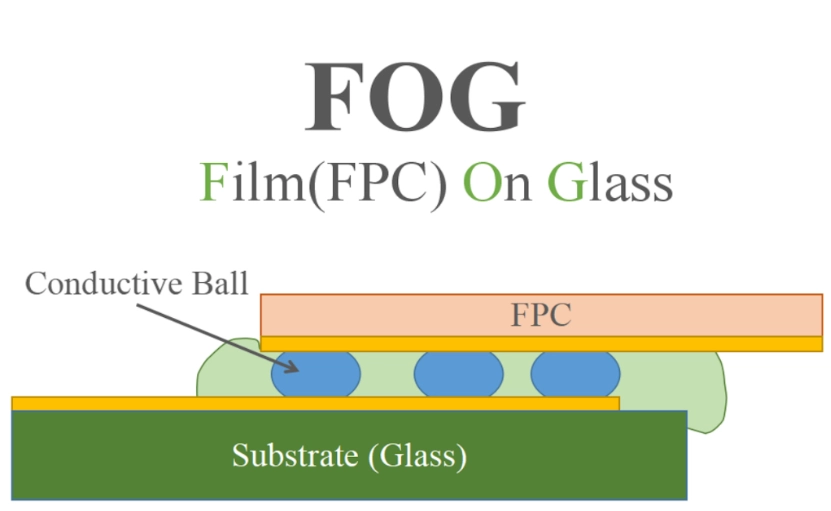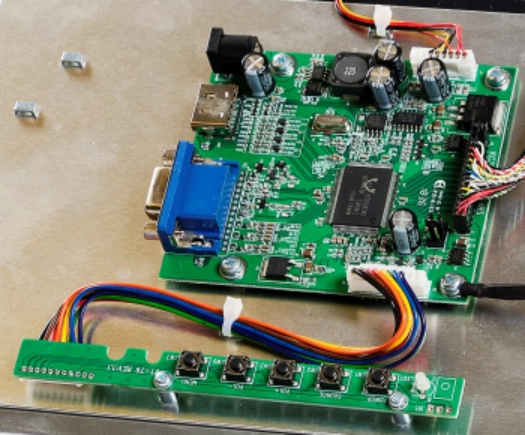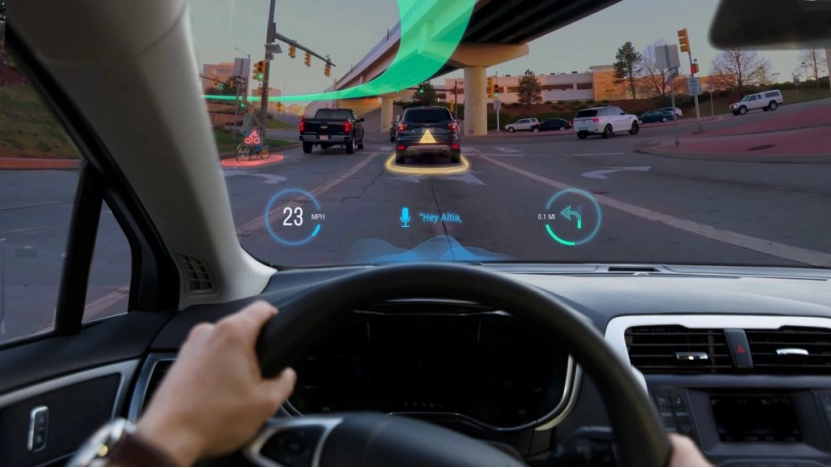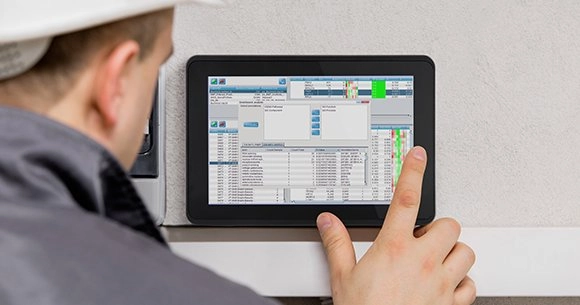Introduction to AOI and FOG Bonding in Display Manufacturing
What Is Automatic Optic Inspection (AOI)?
Automatic Optic Inspection (AOI) is a non-contact inspection technology that uses high-resolution cameras and advanced image-processing software to detect defects in electronic components. In display manufacturing, AOI plays a key role in ensuring the precision and quality of display modules.
By scanning components and comparing them to pre-set standards, AOI can identify misalignments, soldering defects, and contamination that could impact display performance. This technology allows manufacturers to maintain high production standards while reducing human error and the need for manual inspection.
Understanding FOG Bonding in Displays
FOG Bonding is a key step in putting screens together. It joins Flexible Printed Circuits (FPC) or driver chips to liquid crystal glass. This step ensures steady signal flow between the screen’s brain and its surface. FOG Bonding is widely used in LCD and OLED screens. You see it in phones, tablets, monitors, and factory gear. Exact bonding matters a lot. Any mistakes or frail links can spark screen troubles. Think dead spots, shaky visuals, or uneven glow.
The Growing Need for Precision in Display Technology
Folks now crave sharper visuals, vivid hues, and slimmer screen designs. So, makers face tough quality demands. Flaws in screen parts can lead to pricey recalls or unhappy users. That’s why precise FOG Bonding is vital. Rigorous checking with AOI grows more crucial too. By weaving AOI into the making process, producers catch and fix hiccups early. This ensures top-notch screens that hit industry marks.
The Role of FOG Bonding in Display Assembly
Connecting Liquid Crystal Glass and Driver ICs
In today’s screens, driver chips act as the control hub. They manage pixel action, brightness, and color truth. These chips need exact bonding to the liquid crystal glass. This ensures smooth data flow. If bonding goes awry, screens might show warped images or fail entirely. AOI steps in to confirm the chips sit right and stick well. It stops flaws before they turn into big headaches.
Linking Liquid Crystal Glass and FPC
The Flexible Printed Circuit (FPC) bridges the screen panel and the device’s main board. It allows bendy, small designs. This makes it perfect for phones, foldable gadgets, and wearables. But sloppy bonding of FPC to glass can weaken links. It might cause signal drops or screen glitches. AOI checks that the FPC lines up right and bonds firmly. This lowers the chance of flaws that could ruin screen work.
Challenges in FOG Bonding Without Proper Inspection
Without AOI, FOG Bonding faces risks. Think shifts, weak sticking, or dirt from dust or leftovers. These can trigger woes like phantom taps, blinking screens, or total breakdowns. Hand-checking isn’t always trusty, especially in big batches. That’s why AOI is a must-have tool. It keeps quality steady.
How Automatic Optic Inspection Enhances FOG Bonding
Detecting Defects in Real-Time
AOI setups watch the bonding process nonstop. They spot flaws as they happen. By catching issues right away, makers can fix them fast. This cuts waste and boosts overall making speed. Early spotting also keeps faulty screens from hitting the shelves. It shields brand fame and keeps buyers happy.
Ensuring Precision Between Glass and Driver IC
AOI systems study how driver chips align with the liquid crystal glass. They ensure each link is spot-on. Off-kilter chips can spark uneven glow, pixel mess, or touch woes. With AOI, makers confirm every screen hits strict quality goals before moving on.
Improving FPC-to-Glass Bonding Quality
FPC bonding is a tricky task. It needs exact placement and tough sticking. AOI scans the bonding spot for oddities. It ensures the FPC sits right and stays free of flaws. This lifts the strength and trust in the final screen product.
Key Benefits of Using AOI in FOG Bonding
Boosting Production Efficiency
AOI slashes the need for hand-checking. This lets makers ramp up speed without losing quality. By automating flaw-spotting, production lines run smoother. They meet big market calls while keeping accuracy.
Enhancing Display Reliability
Trusty screens need solid, perfect links between parts. AOI ensures every screen hits the top quality bar. This cuts the odds of flops in gadgets, car screens, and factory displays.
Reducing Costs Through Early Defect Detection
Catching flaws early in making stops pricey fixes, material toss, and recalls. AOI helps makers save cash. It spots and tackles issues before they hit big production runs. This leads to overall savings.
Common Defects AOI Prevents in FOG Bonding
Misalignment Between Components
Even tiny shifts in FOG Bonding can hurt screen output. AOI catches these slip-ups early. It ensures driver chips and FPCs sit just right.
Contamination and Foreign Particles
Dust, scraps, and stray bits can mess with bonding. They cause weak links or shorts. AOI spots dirt before final assembly. This keeps bonding clean and trusty.
Bonding Imperfections and Weak Connections
Uneven glue or low pressure can weaken links. These might fail over time. AOI confirms every bond is sturdy and lasting. It improves product life.
AOI vs. Manual Inspection: Why Automation Wins
Speed and Scalability
Hand-checking takes ages and risks slip-ups. AOI offers quick, steady scans. It’s ideal for large-scale screen making.
Accuracy and Consistency
AOI tech brings unmatched exactness. It catches tiny flaws the eye might miss. This ensures steady quality across all screens.
Adapting to Complex Display Designs
Today’s screens boast tricky designs. Think foldable panels and micro-LED setups. AOI adjusts to these twists. It delivers spot-on checks even in advanced tech.
The Future of AOI in Display Manufacturing
Integration with AI and Machine Learning
AI-boosted AOI systems are getting sharper. They learn from flaws and lift checking accuracy. This tech will keep pushing screen making forward. It cuts errors and hikes speed.
Supporting Next-Gen Displays
As screen tech grows, AOI will stay key. It ensures quality in new stuff like bendy OLEDs and sharp micro-LED panels.
Sustainability Through Efficiency
AOI trims material waste and boosts making speed. This aids greener practices. It matches the rising call for eco-smart production in the screen field.
Conclusion: The Critical Link Between AOI and FOG Bonding
Automatic Optic Inspection is vital for FOG Bonding success in screen making. It catches flaws early and sharpens bonding accuracy. Plus, it trims costs. AOI helps makers craft top-notch screens that match buyer hopes. As screen tech leaps ahead, AOI will keep playing a big role. It ensures flawless screen output.
Kadi Display: Your Trusted Partner in Display Manufacturing
At Kadi Display, we understand the importance of AOI in FOG Bonding. With 20 years of expertise, we provide custom LCM, touch panel, and PCBA solutions in our 5,000+ square-meter Shenzhen facility. Our advanced TFT-LCD, AMOLED, and embedded display solutions ensure high-quality performance for various industries, including medical and industrial displays.
Looking for precise and reliable display solutions? Contact us at Sales@sz-kadi.com or +86-13662585086 to explore cutting-edge display technologies that meet your exact needs.
Don’t settle for display defects—let Kadi Display bring clarity to your vision! Reach out today and elevate your next project with precision-engineered displays!












